Up Next

McLaren suddenly becoming Formula 1’s second fastest team at the British Grand Prix naturally raises questions for the likes of Aston Martin, Ferrari and Mercedes – outfits that, until Silverstone happened, were pretty much monopolising the space behind Max Verstappen’s Red Bull.
Esteban Ocon’s podium cameo for Alpine in Monaco, and Lando Norris beating Lewis Hamilton in a straight fight in Austria, could perhaps be easily dismissed as outliers. It could yet be the case for McLaren’s Silverstone performance too – thought it felt more significant given the translation of car upgrades into qualifying pace that carried into the race itself.
When you listen to leaders of the Aston, Ferrari and Mercedes operations it becomes apparent they are fighting specific battles against particular weaknesses – some structural, some operational, some integral to car design/set-up – and that the competitive ranking will continue to fluctuate based on how these weaknesses interact with particular circuit layouts and conditions.
MERCEDES: NOT REALLY SECOND BEST
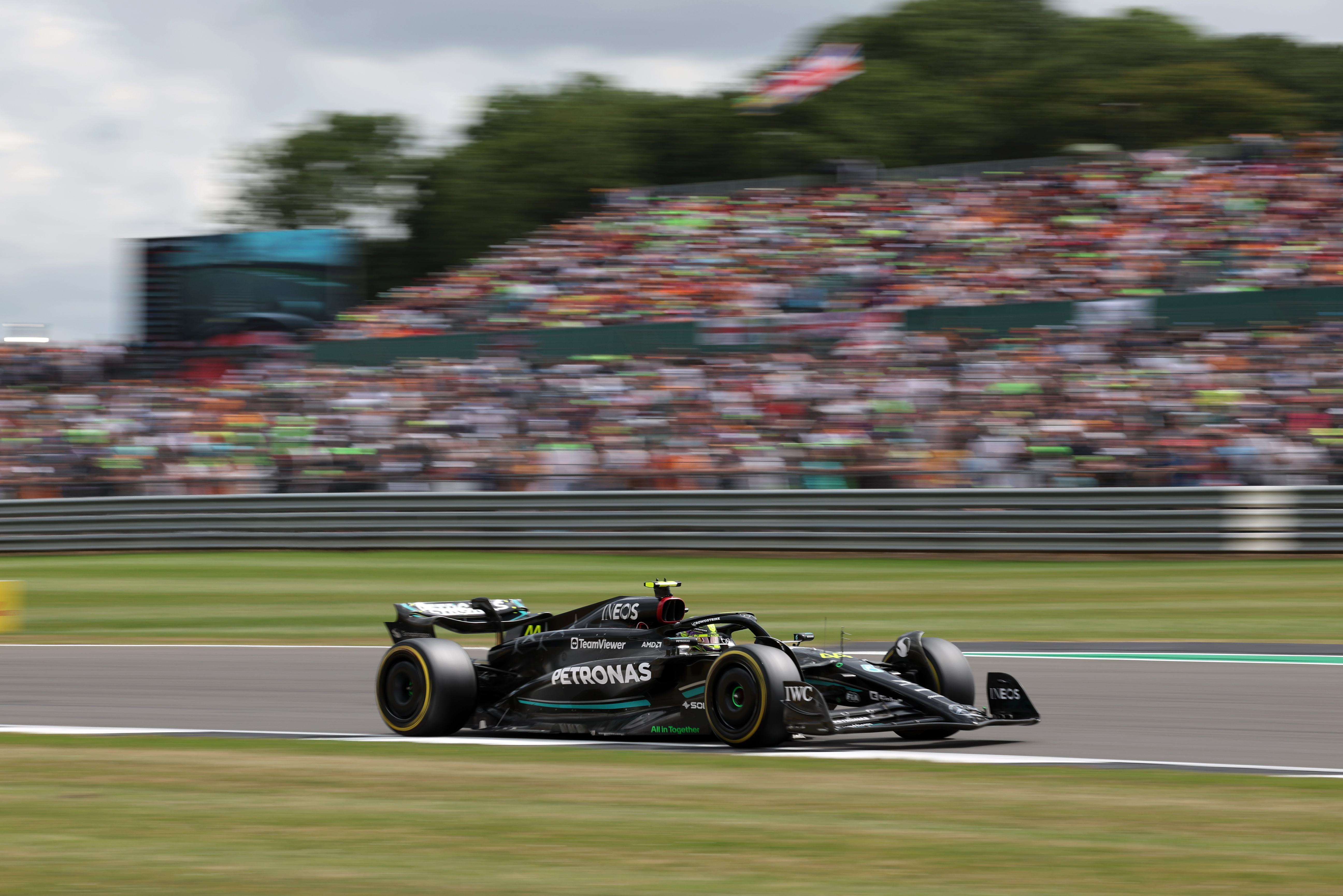
Lewis Hamilton feels McLaren’s impressive performance at Silverstone should act as a “wakeup call” for Mercedes, given it was narrowly but clearly outpaced by one of its engine customers in each of the past two races.
And although Mercedes leads the pack behind Red Bull in the constructors’ championship, the W14 has only really genuinely been the second quickest car in two places: Melbourne (where George Russell led for a time before an engine failure) and Barcelona (where both cars were on the podium).
This would suggest the team is generally executing its races more consistently than the opposition, and indeed the only significant dropped points have come from that engine failure in Australia and Russell’s crash in Canada, while the multiple track limits penalties Hamilton received in Austria meant he dropped points – though the net result was only a swap of positions with Russell.
But underlying this is a car that still doesn’t make all that much sense. At Silverstone, where Mercedes has been historically strong and Toto Wolff even targeted a possible victory, the W14 was nowhere on one-lap pace on Friday in hot conditions but impressively fast over the longer runs, then relatively quicker in the cooler conditions of qualifying and the race – but still behind McLaren.
Fundamentally, it seems the main strength of this car is how it looks after its tyres when they are relatively too soft for the track surface/conditions, making it a better race car than a qualifier because that pure performance window tends to be far too narrow and sometimes, like in Silverstone practice or Miami qualifying, almost completely inaccessible.
On top of that, it clearly lacks aerodynamic efficiency, similar to the Aston Martin, but without the low-speed performance that car can produce. The W14, even after its Monaco overhaul, lacks rear grip in almost all corner types and leaves its drivers struggling to trust the car is going to stick when they commit to high-speed corners.
Ultimately, this is a team 18 months behind the curve of performance with these regulations AND one late in abandoning its original concept for a new (and still compromised) baseline. Given Aston started this process in Barcelona 2022 and McLaren hit the technical reset button for Baku 2023 (one month before Mercedes did), it’s perhaps little surprise the Silver Arrows still have significant catching up to do.
It’s also the case that Aston and McLaren are starting from lower bases, so in theory have more so-called ‘low-hanging fruit’ to claim – and potentially lower ceilings to hit. However, Wolff talks about McLaren’s recent uplift in encouraging terms, because it indicates to him that his own team can improve by a “huge amount” if it takes the right decisions with its own car.
The caveat is that McLaren has more windtunnel time available to it thanks to being significantly more underperforming than Mercedes over the past 18 months. Wolff quantifies 20% more tunnel time as being worth four tenths of a second more to the team that benefits, based on an assumption that all cars will gain roughly two seconds from the beginning of the season to the end.
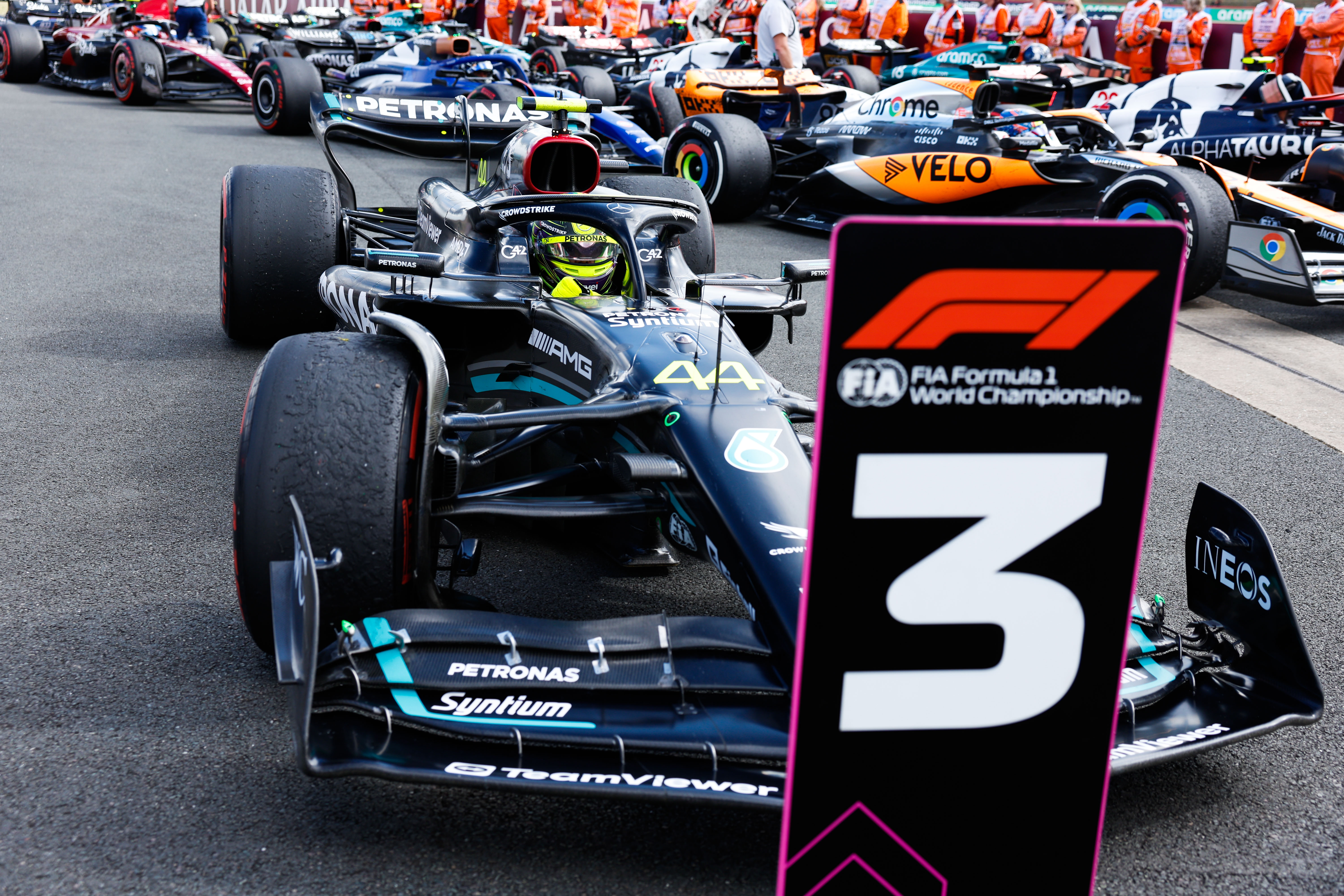
In recognising McLaren’s progress, Wolff also appears to be challenging his aerodynamicists to be smarter in choosing their avenues of exploration, and to make more of the tools available to them.
“We had the sidepod concept and the bodywork in the tunnel very early on already, to see which avenues it could open up and how much it could aid the performance,” Wolff said, when told McLaren had identified the relationship between the sidepod concept and the underfloor as being ‘critical’ to overall performance – something Mercedes surely also now recognises having abandoned its ‘zero-pods’.
“And the relative loss of downforce, the way we measure it, was substantial. So it’s not something that we wanted to follow up early in the year. When we changed our design direction, I think we have a great proof in that area of aerodynamicists, led by James [Allison], and that should…it will be a consideration seeing the step they made.”
Of course no one should copy for copying’s sake, but clearly the steps taken by Aston Martin and McLaren show the gains you can make from studying the images closely and doing the job well. The bigger-picture questions concern whether Mercedes can fully trust simulation tools that led them so astray in the first place, and whether the brain drain Mercedes has suffered in recent years fundamentally now limits its ability to react.
FERRARI: DIFFICULT CAR AND POOR EXECUTION
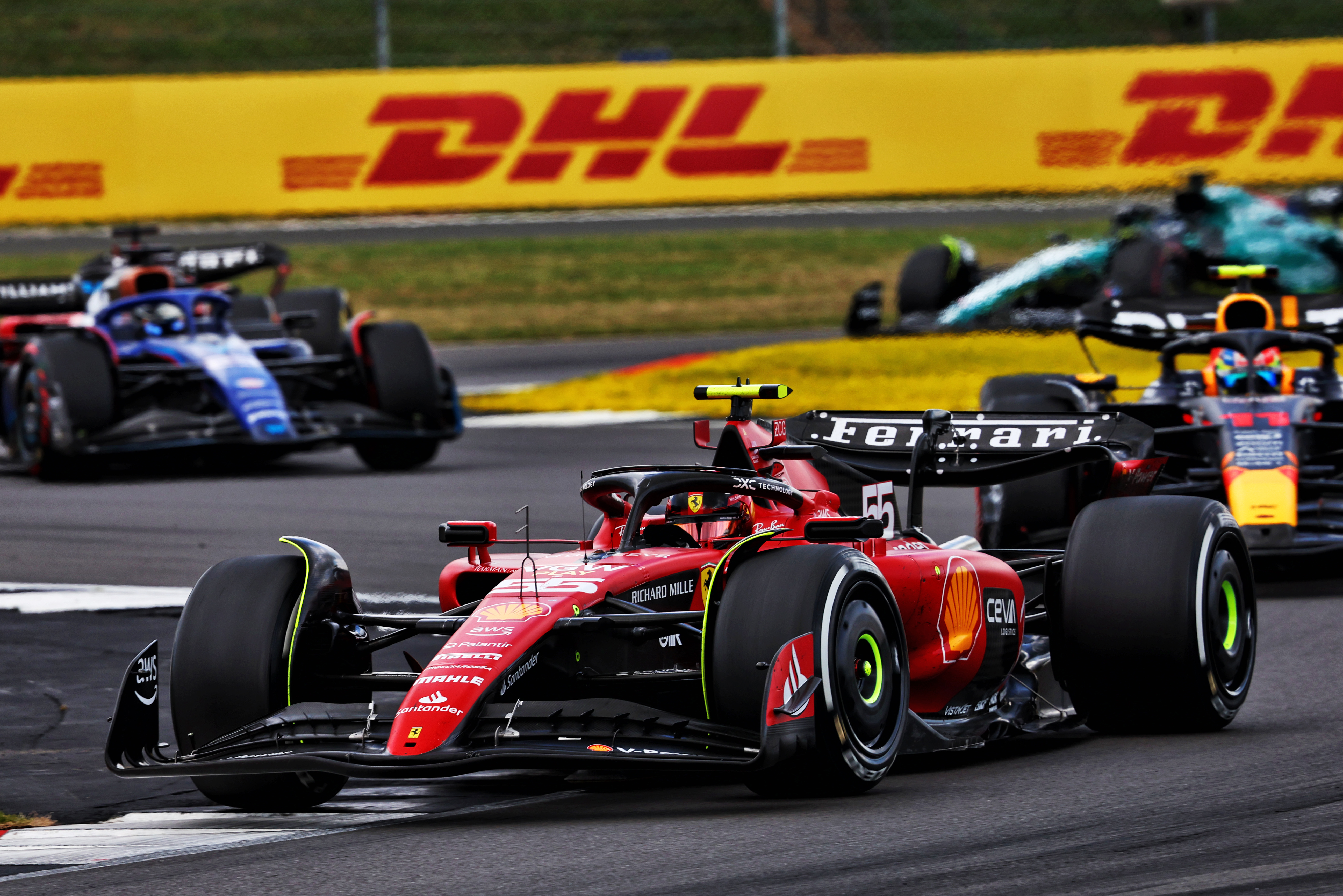
Ferrari probably has the greatest underlying pace among this group of teams, but hasn’t executed a completely clean race weekend on both cars at any of the first 10 races.
Leclerc’s engine failed in Bahrain while on course for the podium, then he took a 10-place grid penalty having qualified second fastest in Saudi Arabia. He was eliminated on the first lap of the Australian Grand Prix in a clash with Lance Stroll, then in Azerbaijan both cars went backwards in the grand prix after a strong qualifying (including pole for Leclerc).
In Miami, Leclerc crashed in qualifying and Sainz was penalised in the race, and both drivers complained about how difficult the car was to drive at high-speed in the wind, then in Monaco Leclerc lost another likely podium to a grid penalty for impeding Lando Norris (Ferrari’s fault, the stewards said).
Sainz qualified on the front row in Spain but Ferrari’s tyre degradation was so poor he reversed to fifth, while Leclerc exited in Q1 and failed to score any points – convinced the car was broken though Ferrari could find nothing wrong.
Ferrari raced well to fourth and fifth in Canada, but only after messing up in the mixed conditions of qualifying and thus not factoring in the podium fight. Leclerc achieved his best result of the season with second in Austria, but Sainz was undone (like many) by track limits. At Silverstone, the Ferraris qualified just behind the McLarens in fourth and fifth but finished only ninth and 10th in a race where a miscalculated fear of high tyre degradation left them “scared” to push, according to team boss Fred Vasseur.
Clean up all this mess and you feel Ferrari – even with the difficult car it’s produced this year – should easily be second in the championship behind Red Bull. Instead, the Maranello team languishes in fourth, nearly 50 points behind Mercedes.
After building a quick car for 2022 which Ferrari struggled to develop properly, then switching focus to taking excess drag out of the car for 2023, Ferrari now has a car that lacks grip in high-speed corners and seems massively wind-sensitive. In now trying to widen the narrow performance range of that car, Ferrari concedes its recent development focus is basically about quelling the car’s worst excesses rather than making it faster.
“It’s not terrible [in] the high-speed, we improved it in Austria which we can confirm here [Silverstone], because over one lap and over the race in the high-speed corners we were not bad at all,” argues Sainz.
“But the tyre deg, the tyre energies, the wind sensitivities, the unpredictability of the car over one lap, I was three or four tenths quicker than others because of a gust of wind so we still need to focus on that.”
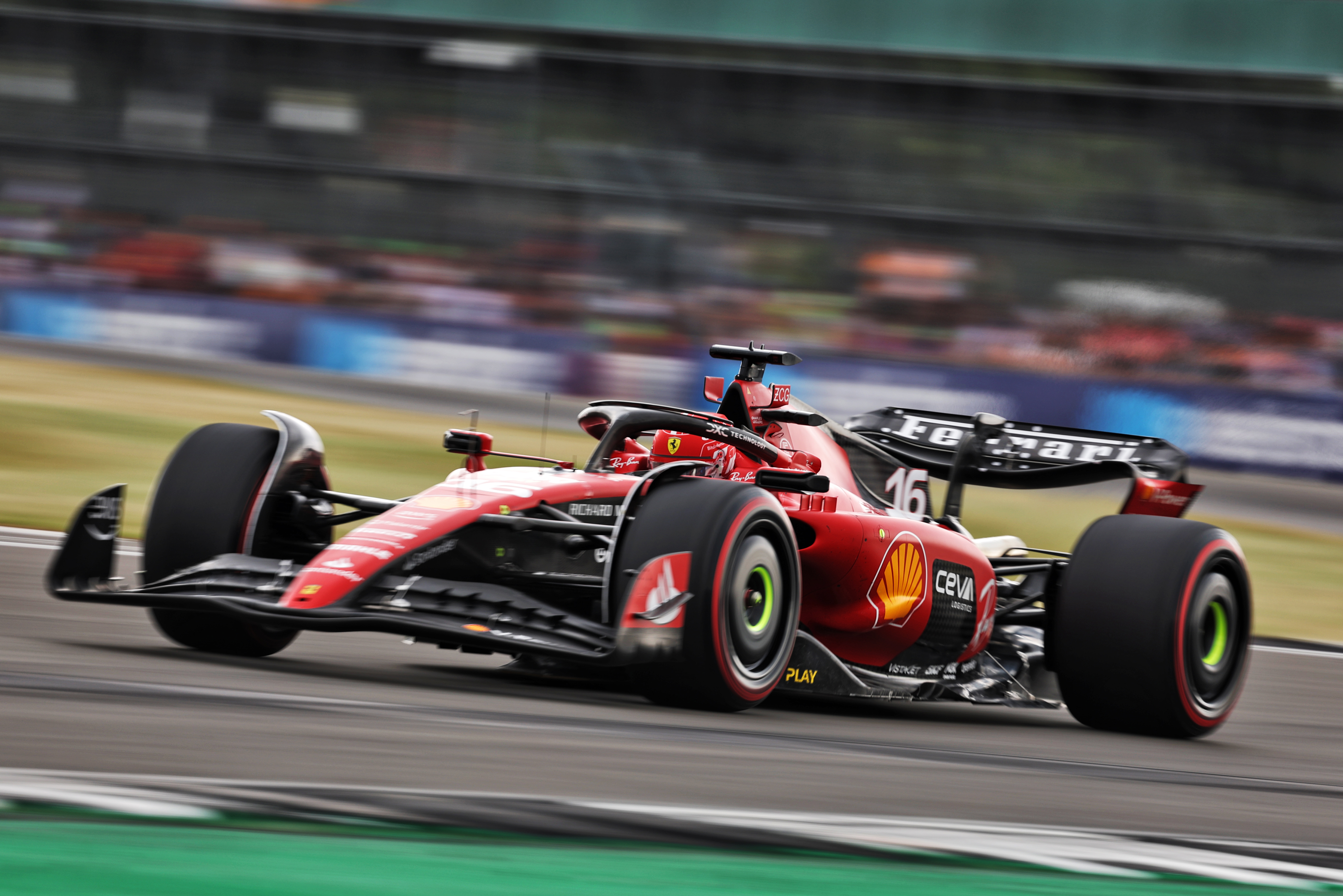
Vasseur confirms the car is “still a bit unstable with the wind” and argues the spread of performance across the group behind Red Bull is now so tight that “one or two tenths between sessions for six cars means the layout of the track is fitting your car, or you have a good set-up for the weekend or a clean weekend, if you are getting one tenth it’s a huge step”.
He has repeatedly been asked about Ferrari’s development plan (or lack of it) and the extra pressure created by the rise of Aston Martin and recent resurgence of McLaren, but Vasseur argues Ferrari can find more time each weekend, certainly more than one or two tenths, by better understanding and optimising the car it already has.
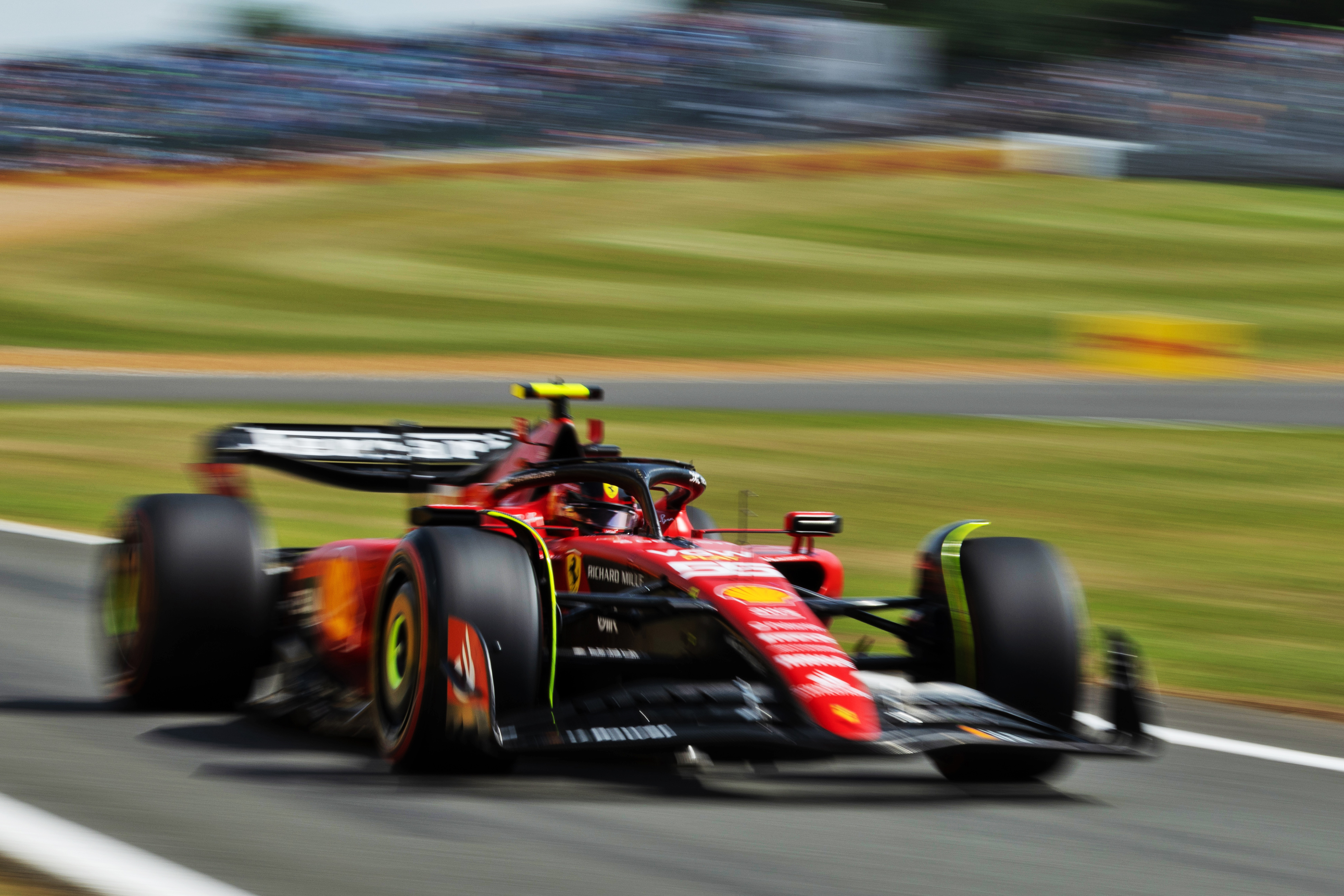
There is something to be said for this, given the pattern of Ferrari’s season so far. Equally, you could argue that’s only true in the short term and that in bigger-picture terms Ferrari has created an aerodynamically unstable monster that its drivers are doing an incredible (and near impossible) job trying to tame – hence the wild swings in performance from circuit to circuit and even from session to session sometimes.
Ultimately, is better optimising this car going to mean Ferrari matching or beating Red Bull? Unlikely, so then the bigger questions about car concept, the team’s processes and its recent managerial merry-go-round become more pertinent. Ultimately, his hasn’t really looked like a team heading firmly in the right direction for the best part of 12 months now…
ASTON MARTIN: IN DANGER OF DROPPING OFF?
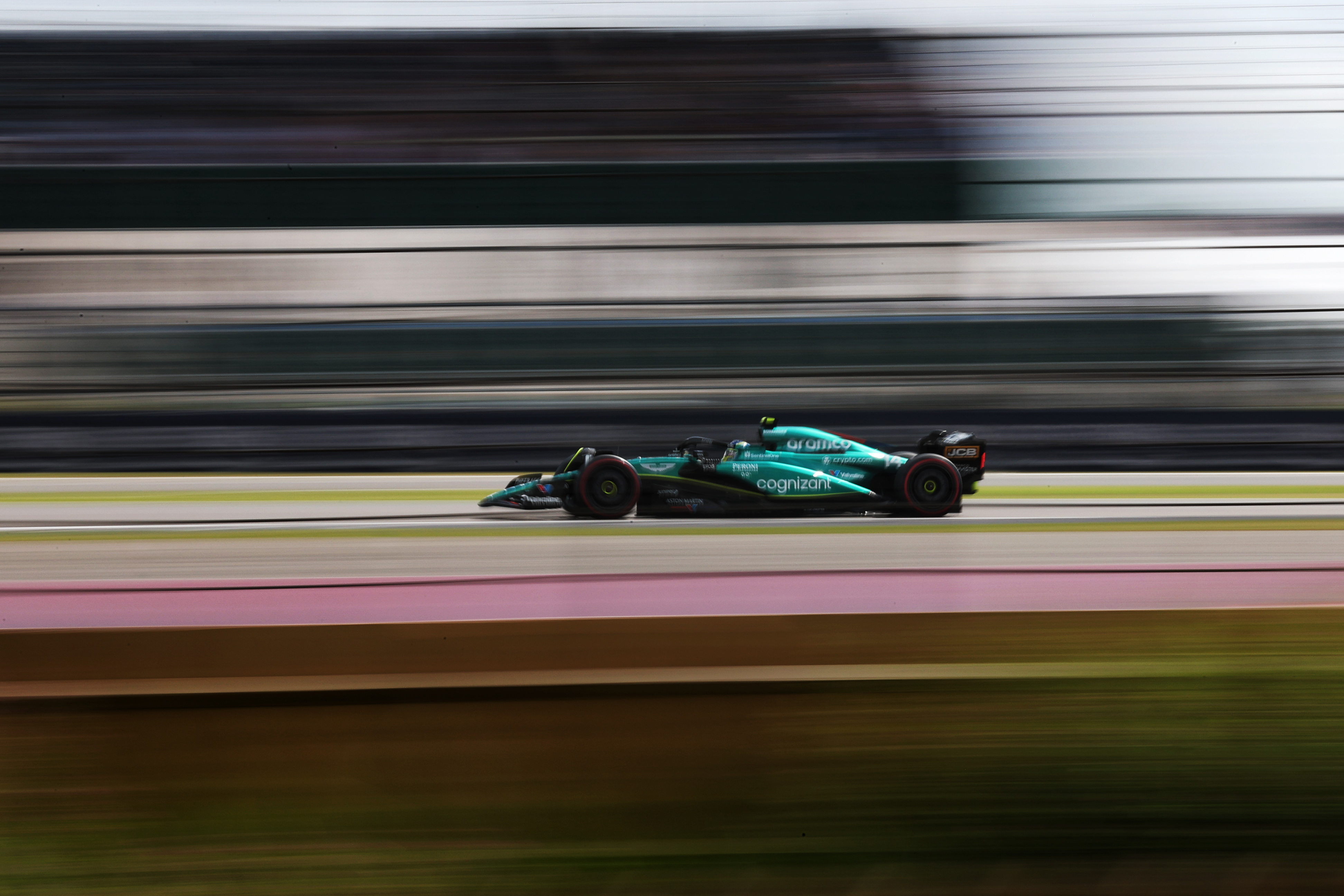
“To be honest I’m not one to stress about the development. The car is better than expected this year. We are fighting for things that we could probably never dream at the beginning of the year. So, now, if we can keep in the top 10 and fighting with the top guys, it’s great. But I think we have to focus as well on the long-term picture. We cannot get stressed every weekend if we are seventh or if we are fourth or if we are in the podium. We need to be very pragmatic and very relaxed about our performance.”
Fernando Alonso’s outlook neatly sums up Aston Martin’s predicament. Will the team that has massively overachieved so far in 2023 keep pushing on to beat Mercedes and Ferrari to second in the championship, or will it take its foot off the gas on account of already massively exceeding its pre-season targets?
Alonso seems to be suggesting Aston should do exactly that. What does it matter finishing second this year when the ultimate goal is still so far from reach? Team boss Mike Krack echoes this sentiment when he says 2023 would still feel “respectable” to Aston Martin even if there were no more podium finishes from now until season’s end.
Obviously Aston knows it has a car with excellent low-speed performance and too much drag to be quick on the straights or on very fast circuits, so can write off relatively weak outings at Barcelona, the Red Bull Ring and Silverstone on that basis. The team plans further updates to its car before the summer break too, so clearly hasn’t completely written off 2023 for 2024’s sake.
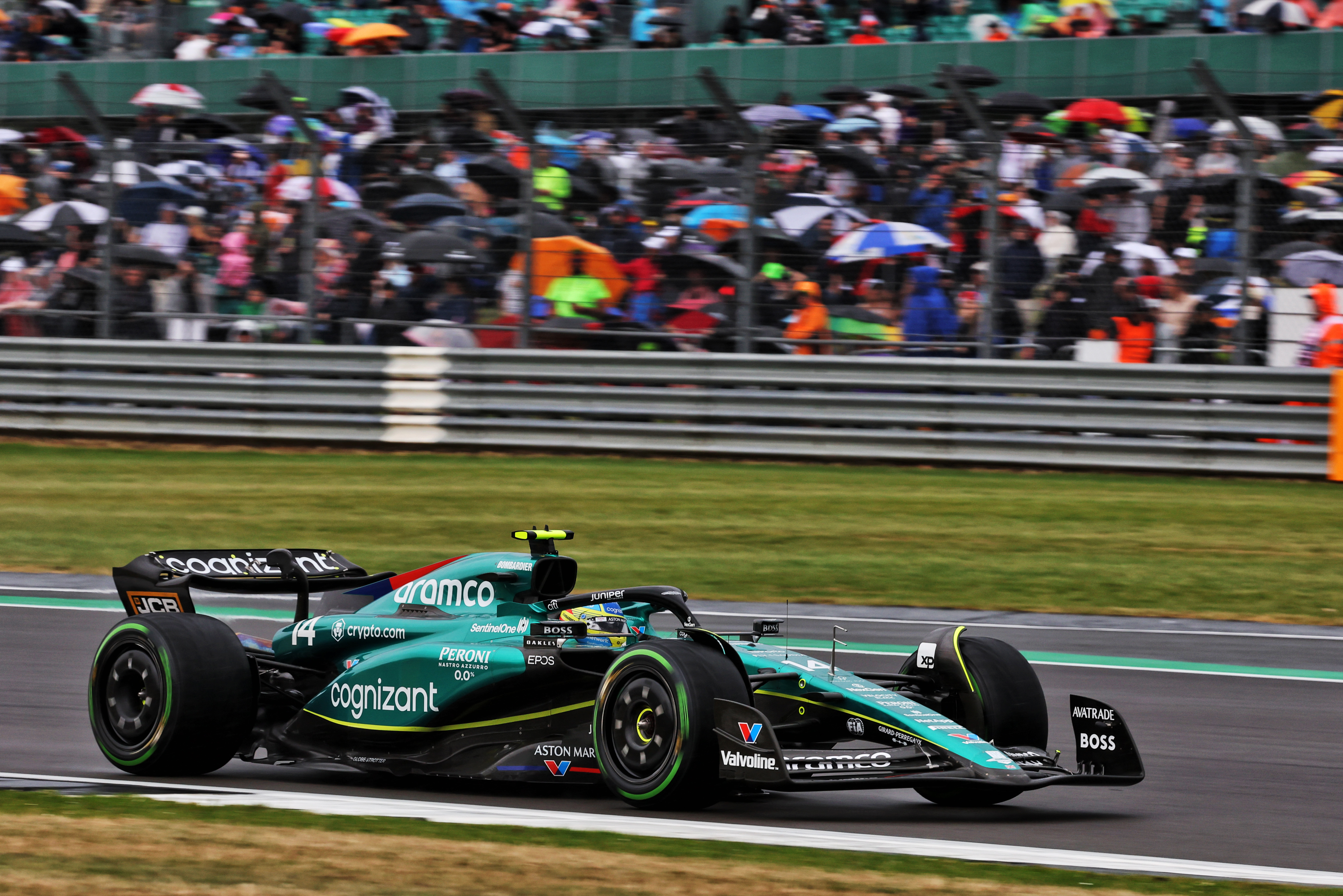
Hungary should mark a return to form, given the twisty nature of the circuit and its higher-downforce configuration. Krack says McLaren’s Silverstone performance “cannot go unnoticed” but privately he will be expecting Aston to be right up there again at the Hungaroring and certainly ahead of McLaren and Alpine. If not, then maybe he will have less cause to feel quite so vocally relaxed about Aston finishing outside the top five (on the road) for two consecutive races now.
And taking that final step to becoming a championship challenger is the toughest of all. Having a car with lots of downforce but quite inefficient downforce is not much of a recipe for success if you don’t enjoy a power advantage over your opposition – and that’s certainly not the case for what remains, for now, a Mercedes customer team.
McLAREN: DON’T EXPECT ANOTHER MIRACLE

Andrea Stella’s no-nonsense approach to running McLaren means he for one isn’t getting carried away with what happened at Silverstone. The team takes obvious encouragement from that performance, but also knows what Stella calls the “premium” on high-speed corners and cooler conditions present in Austria and at Silverstone played to McLaren’s core strengths.
But that doesn’t mean the recent aero upgrade introduced in three stages – the last of which will happen in Hungary, where Oscar Piastri’s car will also be configured to exactly the same specification as Lando Norris’s – won’t have gone some way towards addressing McLaren’s relative weakness at low-speed and in hotter conditions.
Like Alonso and Aston, McLaren also has its sights set on longer-term objectives. Stella says McLaren is targeting “regular podiums” in 2024 then race victories in 2025, so what happens for the rest of this season results-wise is probably less important than continuing to validate the technical restructuring Stella recently undertook, and how that translates into a better understanding of the challenges posed by cost-controlled, ground effect Formula 1.
McLaren’s stated aim for 2023 is to be contending to be the fourth-best team by the end of the season. The fact Mercedes is behind the development curve, Ferrari is still a bit shambolic and Aston has polar opposite strengths to McLaren’s (and may also stagnate after a period of overachievement) creates conditions whereby a strong performance for McLaren, such as at Silverstone, could lead to more podiums rather than battling for seventh and eighth positions in a normal race.
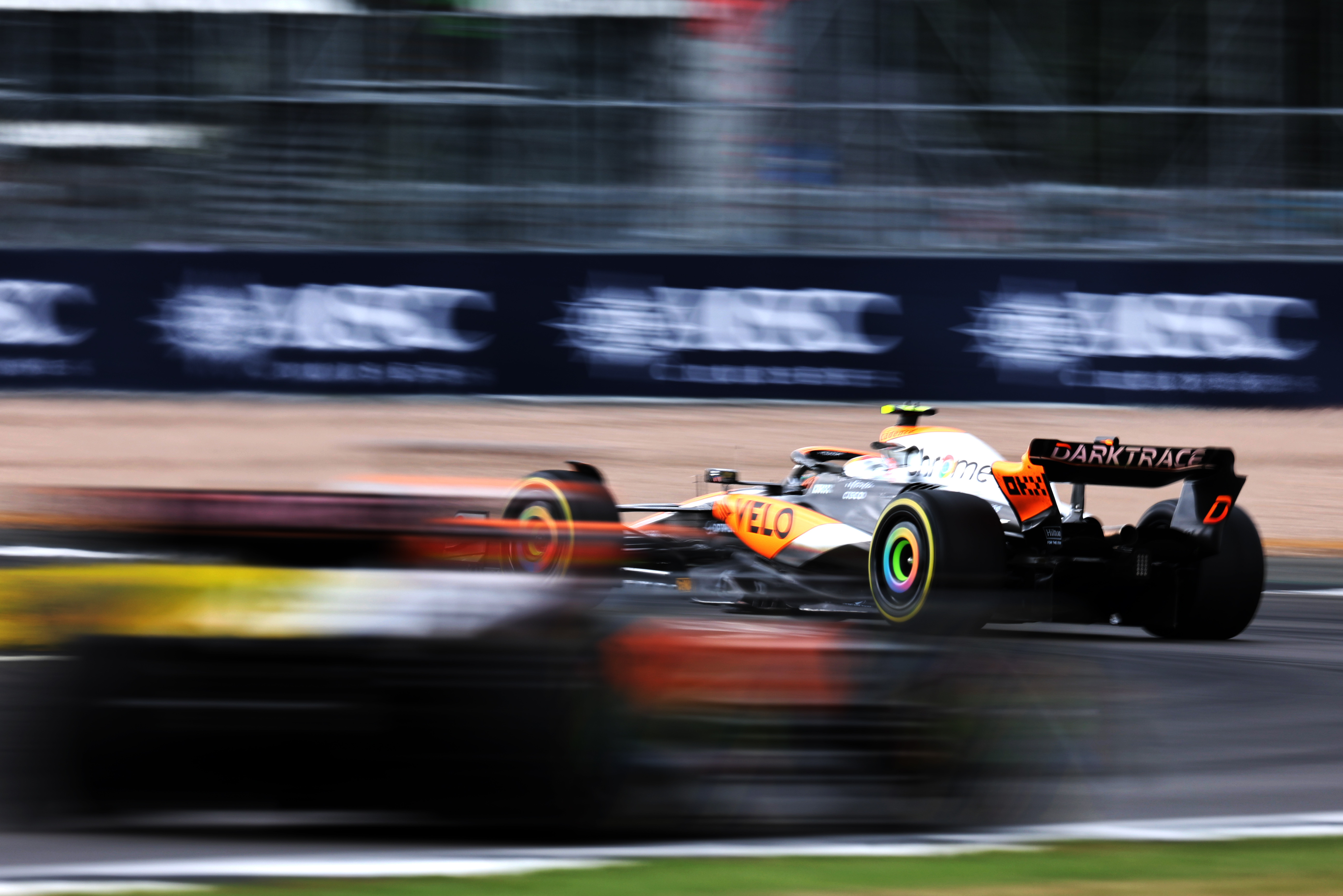
Stella has also talked up Piastri’s seriously impressive form as a rookie, specifically Piastri’s level of commitment in the high-speed corners of Barcelona and Silverstone – the ones that require something other than simply keeping the throttle pinned at least – as being so impressive that he is pushing incumbent driver Norris to new heights.
This is something Stella calls the “net benefit of having two competitive drivers” and, when the field behind Red Bull is as compressed as Vasseur outlines, those drivers extracting the most from the car on a given weekend can make a substantial difference. At Silverstone, the gap between Norris in second and Hamilton in seventh on the grid was exactly 0.25s, so very much within the range of driver performance/confidence and set-up/car optimisation.
Ferrari, McLaren and Mercedes all have driver line-ups with no clear weak point. Aston and Red Bull are tending to rely more heavily on one driver. Lance Stroll should most certainly not be only two points clear of Norris in the drivers’ championship, and nearly 100 behind Alonso. Equally, Sergio Perez should not be 99 points behind Verstappen and only 19 ahead of Alonso, given the relative disparities in equipment over the first 10 races.
For different reasons, both of these situations are relatively sustainable in the short term. But if McLaren’s resurgence continues, Red Bull’s advantage diminishes, and the field overall compresses further, the relative strengths and weaknesses of each team’s driver line-ups will carry greater weight. What use is a theoretical two-tenths of a second upgrade if the driver can’t extract that time from the car?







